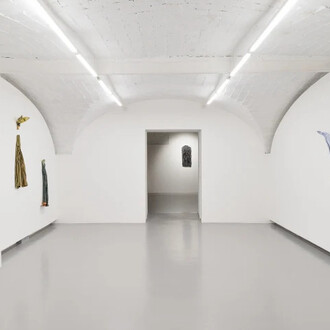The two major driving forces of our civilization are the power of science/technology and the power of spirituality. The power of science and technology has brought us to the point of unprecedented benefits—particularly in communication, travel, medicine. At the same time the results of these accomplishments are also threatening our existence.
Aside from the old treat of misusing atomic energy, with Hiroshima and Nagasaki, we are facing, since 1950 or thereabout, a series of threats to our own planet: Global Warming, devastating amounts of pollution, deforestation, reduction of the ozone hole, loss of biodiversity, and a high percentage of people who live below the poverty threshold— with corresponding problems of emigration and political unrest.
The way out from this negative systemic entanglement can only be sought in a major shift in the level of human consciousness—a higher level of spirituality. More in general, it is evident that a healthy civilization should be seen as an equilibrium between the two driving forces—technical progress and developing spirituality. Clearly, a science “without a soul” (as occasionally as it’s said in popular literature) would only bring on disaster. Conversely, we cannot think of a world based on spirituality alone. Let me cite here the famous sentence by Einstein: “Science without religion is lame, religion without science is blind”.
Spirituality, generally speaking, is responsible for the ethical behaviour and internal growth of individuals, as well as for the responsibility of the planet’s resources. It may also create concepts regarding ascetics and sainthood, but this is out of the context now. It is, first of all, necessary to make a distinction between religion and spirituality. Much has been written and said about the relation between science and religion. From authors like Gould, Dennett, Dawkins, Hawking, Steindl-Rast we are given a complex picture.
Much of the confusion is due to the frequent misunderstandings between religion and spirituality (see on that also the critical notes in the recent book by Capra and Luisi, The Systems View of Life). The term spirituality comes from the Latin word: spiritus. Spiritus means breath, or life breath. Therefore, spirituality is a general property of human beings, and, as such, is prior to religion. It is actually the basis of all religions. It has two directions: one upward, the other horizontal. The first encompasses the human tendency to comprehend and, possibly, be one with the higher dimensions of nature’s mysteries. The other, more terrain direction of spirituality, is towards nature and people: love and respect for all forms of nature and life are its essential components. Thus, when we say that scientists like Einstein and Bohr were spiritual souls, we mean that they hosted, internally, the ambition to identify themselves with the mysteries of the cosmos. And when we say that people like Gandhi or Martin Luther King were spiritual beings we mean to say that they were expressing, through their social movements, higher ideals for a better humanity—in this case here is a union of the inner and outer dimensions of spirituality.
In all these cases, we can talk about “lay spirituality”: a higher form of being spiritual without having the necessity to assume a creator God or the general badge of “religion”. Religion, from the Latin “religio” means bind together. This can be seen as the institutionalization of these spiritual values into various fixed codices. Each codex can be based on a specific God, as done by the major monotheistic religions—the Christian, the Muslim, the Judaic. However, religion does not always have a creator, God—consider Buddhism, Taoism, Confucianism, just to mention a few. But, they also have a codex of rituals; they have their specialized temples, their priests and their priest hierarchies. Of course, as it is too well known, the institutionalization entails the danger of stiffness, rigidity, and also of becoming part of the political power.
And what is science? Here, again, one must be careful to not confuse science with technology, which is its pragmatic right arm. It is the same way as we should not confuse spirituality with religion—although the two things may be, in several cases, strictly correlated. Science is essentially the search for laws governing nature and our world, and, pragmatically, it is the interpretation of the phenomenology of our world in terms of natural laws. Transcendence, miracles, and superstitions are not a part of science. Science, however, is only one part of the human enterprise. With its internal rules and codices, but essentially, in its pristine form, it can be seen as the search for truth. In this sense it is not in contrast with spirituality and religion.
What is then the problem?
The problem is that religion (most specifically Christian religion)—because of its own written codices—in the dialogue with science has drifted into fundamentalism. Fundamentalism states that there is only one truth which should not be compromised. And as such, religion often became an enemy of science, and this historically happened each time that science had innovations which were in contradiction with the written codices.
The case of Galileo process is a typical case, but this didn’t stop there. In modern times, science had to face the creationist movement, which, particularly in the United States, being linked to reactionary right-wing lobbies, started a fierce campaign against Darwinian ideas, aiming at the elimination of teaching natural evolution to public schools, to substitute it with the biblical account of creation. The political stance of religion against certain modern aspects of science and sociology (stem cells, abortion, biological testament, euthanasia… ) testimony of this continuous, fundamentalist interference of the Church with the lay-science world. To be clear: not that the controversy of these items and the corresponding discussions is, per se, negative, but it cannot be conducted on the basis of fundamentalism. And certainly the naïve idea of S.J. Gould, of “two independent magisteria” (science and religion), never worked and will never work in the present era due to the fundamentalism of religious hierarchies.
From the historical point of view, science and spirituality were actually in good harmony with each other for long time. Scientists like Galileo, Copernicus and Newton, and many others in their time, were believers, and although they had some controversy with the religious hierarchies, they did not lose their faith. They kept looking outside, towards the mysteries of the cosmos, as shown in a famous illustration [1], but keeping the faith that all that had been created by God.
The one who lost his faith, in his later years, was Charles Darwin. In fact, his work signed a profound split between science and religion, a split which goes on until the present time. As already mentioned, the creationist movement–also in its more fashionable dress of the Intelligent Design, ID —is in arms against natural evolution.
How is the situation today?
In many parts of the western, conservative world, the two terms are still viewed as contradictory. However, in many other parts, including certain sections of the academic world, things are different. We are experiencing a convergence, or, at least the intention of making a dialogue. Every year there are holistic conferences or workshops devoted to science and spirituality. The term “spirituality” is no longer a taboo in public media, as it was in the 80’s and of last century.
In the academic world, an important date is the Cortona-week. Instituted at the famous ETH Zurich (the European MIT). This is a residential, yearly conference where graduate students of all disciplines are mixed with artists, spiritual leaders, writers and psychologists. Here they open up their horizons towards more holistic dimensions of life—for example: at the international level [2].
There is the well known Mind and Life Institute, under the spiritus rectus of the Dalai Lama. Mind and Life Institute is devoted to the dialogue between modern science and Buddhism [3]. The present writer has been deeply involved in both these initiatives, and I will report more in detail on each of them later on these columns.
Spirituality finds its better pragmatic expression in ecology. It’s seen as a larger awareness and respect for nature, along with all forms of life. In this sense, while we have mentioned above how the crisis of our civilization is creating various forms of social distress and destroying our own environment, we can also say that, just as a response to this crisis, it seems to appear that a new sense of ethical responsibility and spirituality in several parts of the world, and particularly in the new generations, is growing. Again we cannot go in detail, but see the already cited book by Capra and Luisi which give an in-depth discussion and data on this issue.
Spirituality may be in contradiction to certain aspects of technology, such as hyper-consumption of energy, GMO, cloning, littering, deforestation, or simply consumerism. But here is where the argument becomes political—and actually spirituality, per sé, is not incompatible with political activism —see Gandhi or Martin Luther King.
Let us conclude by going back to the simple illustration of fig.1[1]. In fact, this shows in the most plastic way that, in principle, there is no real contrast—no real Cartesian split—between the two worlds of our missionary. He can live in harmony between his internal spiritual quest and the drive of looking outwards for the acquisition of new scientific information—the two views are not in contrast with each other, they complement each other.
Notes:
[1] Figure 1: The medieval alchemist looking outside his own world, the famous so-called Flammarion engraving. The caption translates to "A medieval missionary tells that he has found the point where heaven and Earth meet…"
[2] www.cortona-india.org
[3] www.mindandlife.org
References:
F. Capra, P.L. Luisi, The Systems View of Life—a Unifying Vision, Cambridge University Press, 2014; Italian edition, Vita e Natura, published in 2014 by Aboca, San Sepolcro, (AR)
J.S. Gould. Rocks of ages, Ballantine Books, 1999
D. Steindl-Rast, Spirituality as common sense, 1990, The Quest, 3
S. Hawking and L. Mlodinow, The Grand Design, 2010, Bantham Books




















